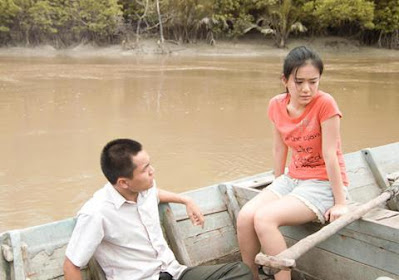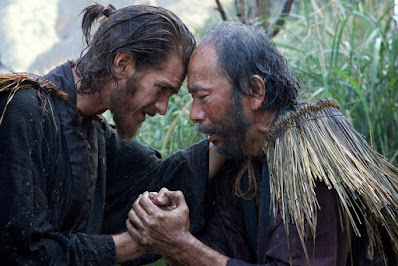River of Exploding Durians (2014) is the astonishingly assured debut film from Malaysian director Edmund Yeo that heralds the arrival of a major new talent in world cinema. The film is a complex and poetic portrait of youthful love and idealism, and the struggle for personal and political revolutionary change. The film River of Exploding Durians most recalls is Edward Yang’s A Brighter Summer Day, and like that film, it explores how a country’s history shapes the course of the growth of a group of youth.
Set in contemporary Malaysia, the central event in River of Exploding Durians is the construction of a rare earth plant in a small, coastal community, which leads to fears of radiation poisoning among some of its residents. The three main characters whose lives are most affected by this plant are Ms. Lim (Zhu Zhi-Ying), and her two students Hui Ling (Daphne Low) and Ming (Koe Shern). There are two central stories in River of Exploding Durians which parallel and intersect each other: the troubled love affair between Ming and Mei Ann (Joey Leong), and Ms. Lim and her leadership of a group of revolutionary students, which includes her students Hui Ling and eventually Ming. These parallel stories lead up to an emotionally devastating yet hopeful conclusion that recalls the similarly tragic ending of A Brighter Summer Day.
Like Yang’s film, River of Exploding Durians is an epic yet intimate portrait of a country and its people. Throughout the film, Yeo focuses on breathtakingly beautiful images of the lush, verdant tropical landscape of Malaysia, whose environment is very similar of that to Yang’s native country of Taiwan. Not only does Yeo highlight the visual beauty of Malaysia, but also the rich auditory soundscape of the country, with the calming and vibrant noises of crickets at night, and the lush flows of its many waterfalls and lakes. Indeed, the audio and visual components of Malaysia almost become another main character on the film.
Aesthetically, Yeo constantly experiments with the narrative form, flowing in and out of the interior thoughts of his many characters, in an almost James Joycean manner. In a particularly inventive scene, as Ming and Mei Ann are traveling together on a bus, we hear various snippets of dialogue from them which appeared from another time, but interlaced with them sitting silently in the bus, enjoying each other’s company.
Yeo bifurcates the film neatly into two halves— the first half is an intimate portrait of young love, as Yeo explores Ming’s and Mei Ann’s burgeoning romance, while the second half portrays the attempts by Ms. Lim to lead her students into increasingly violent and unstable protests against the building of the rare earth plant. Both halves of the film begin with the characters filled with hope and promise, but eventually succumbing to tragedy. Yeo masterfully weaves the two halves of the film together in a touching coda set during a Chinese Lunar New Year Festival, as two of the youthful leads from the film briefly reunite in a moment of pure hope and optimism.
While the first half of River of Exploding Durians very much focuses on nature and youthful love, the second half deals more with the growth of youthful idealism into adult bitterness and disillusionment, as embodied by the character of Ms. Lim. It is in this second half of the film that Yeo employs some of his most radical cinematic experimentation. He stages a series of scenes of students recreating historical events rooted in revolution that recalls the film of Jean-Luc Godard from the 1960s, such as Le Petit Soldat, La Chinoise and Week-End. The use of color and the staging of these student revolutionary recreations most directly recalls similar scenes from La Chinoise. Like Godard, Yeo is exploring how cinema can portray history and revolution in more dynamic and innovative ways.
What makes River of Exploding Durians such an aesthetically accomplished work of art are its poetic moments of pure and at times shocking visual beauty, such as a field of burning durians that morph into a burning pig, a paper lantern rolling into the frame under flowing white curtains, and a flurry of papers on fire that turn into burning books. It is refreshing to see a film such as River of Burning Durians which so confidently combines so many innovative cinematic elements into a seamless, coherent whole. With his debut film, Yeo has breathed new life into cinema, and it will be exciting to see how he continues to expand the language of cinema in future films.




















